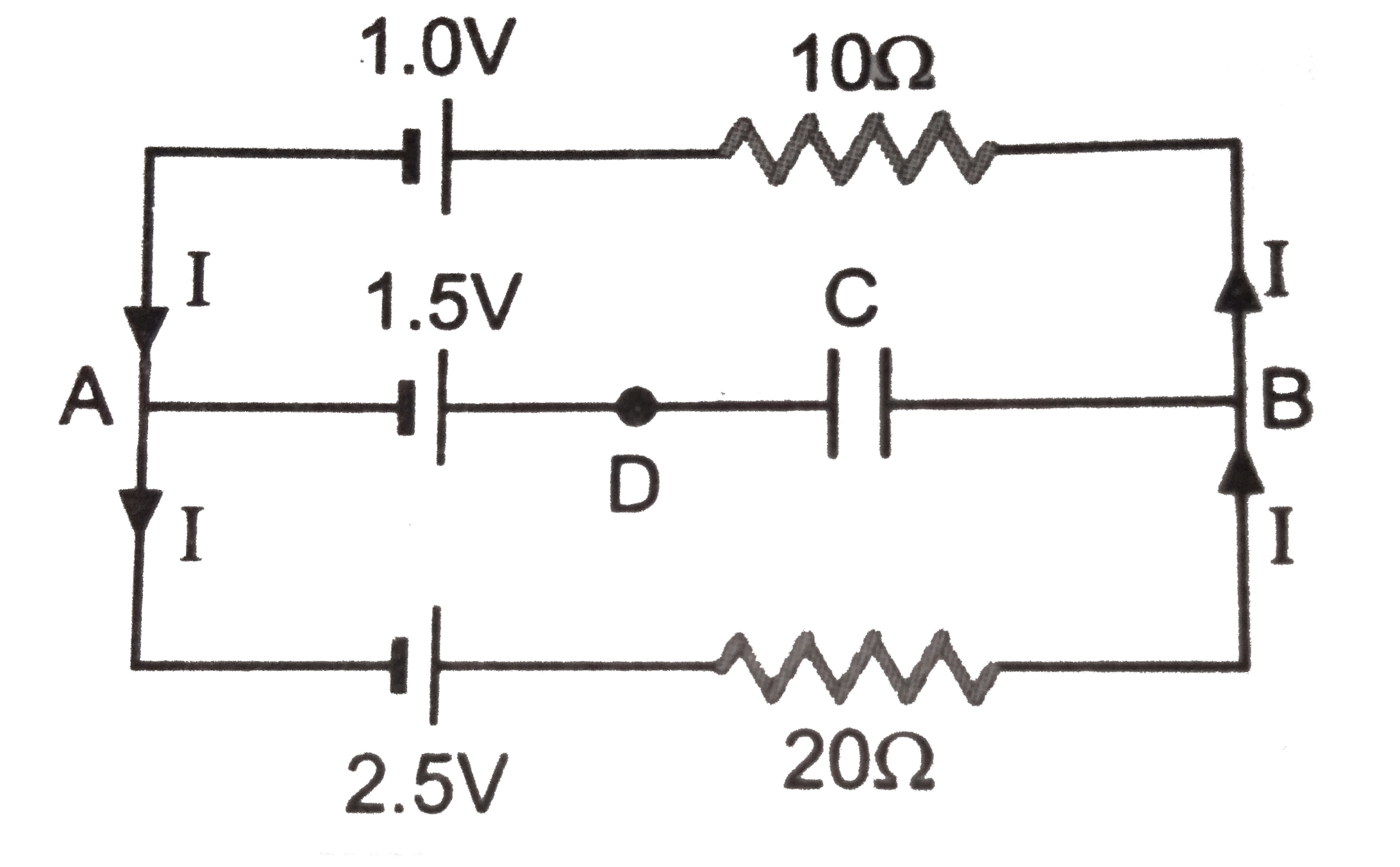The plates of a capacitor are charged to a potential difference of 320 volt and are then connected across a resistor. The potential difference across the capacitor decays exponentially with time. After 1 sec the potential difference between the plates of the capacitor is 240 volts. what is the potential difference between the plates after 2 s?
200 V
180 V
160 V
140 V
The correct Answer is:B
To solve the problem step by step, we can follow these calculations:
Step 1: Understand the Exponential Decay of Voltage
The voltage across a capacitor discharges exponentially when connected to a resistor. The voltage at any time t can be expressed as:
V(t)=V0e−λt
where:
- V(t) is the voltage at time t,
- V0 is the initial voltage (320 V in this case),
- λ is the decay constant,
- t is the time in seconds.
Step 2: Use Given Information to Find the Decay Constant
We know that after 1 second, the voltage V(1)=240 V. Plugging this into the equation gives:
240=320e−λ⋅1
To isolate e−λ, we divide both sides by 320:
e−λ=240320=34
Step 3: Find e−λ for t=2 seconds
Now, we need to find the voltage after 2 seconds. We can express this as:
V(2)=V0e−λ⋅2
Since we have e−λ=34, we can find e−2λ as follows:
e−2λ=(e−λ)2=(34)2=916
Step 4: Calculate the Voltage at t=2 seconds
Now substituting back into the voltage equation:
V(2)=320⋅e−2λ=320⋅916
Calculating this gives:
V(2)=320⋅916=20⋅9=180 volts
Conclusion
Thus, the potential difference between the plates of the capacitor after 2 seconds is 180 volts.
---
The voltage across a capacitor discharges exponentially when connected to a resistor. The voltage at any time t can be expressed as:
V(t)=V0e−λt
where:
- V(t) is the voltage at time t,
- V0 is the initial voltage (320 V in this case),
- λ is the decay constant,
- t is the time in seconds.
We know that after 1 second, the voltage V(1)=240 V. Plugging this into the equation gives:
240=320e−λ⋅1
To isolate e−λ, we divide both sides by 320:
e−λ=240320=34
Now, we need to find the voltage after 2 seconds. We can express this as:
V(2)=V0e−λ⋅2
Since we have e−λ=34, we can find e−2λ as follows:
e−2λ=(e−λ)2=(34)2=916
Now substituting back into the voltage equation:
V(2)=320⋅e−2λ=320⋅916
Calculating this gives:
V(2)=320⋅916=20⋅9=180 volts
Thus, the potential difference between the plates of the capacitor after 2 seconds is 180 volts.
Topper's Solved these Questions
- BOOK - MARVEL PUBLICATIONCHAPTER - ELECTROSTATICSEXERCISE - TEST YOUR GRASP20videos
ELECTROSTATICS
- BOOK - MARVEL PUBLICATIONCHAPTER - ELECTRONS AND PHOTONS EXERCISE - TEST YOUR GRASP - 1715videos
ELECTRONS AND PHOTONS
- BOOK - MARVEL PUBLICATIONCHAPTER - GRAVITATION EXERCISE - TEST YOUR GRASP -220videos
GRAVITATION
Similar Questions
The plates of a parallel plate capacitor are charged to a potential difference of 117 V and then connected across a resistor. The potential difference across the capacitor decreases exponentially with to time. After 1s the potential difference between the plates is 39 V, then after 2s from the start, the potential difference (in V) between the plates is
View SolutionThe plates of a parallel plate capacitor are charged to a potential difference of 117 V and then connected across a resistor. The potential difference across the capacitor decreases exponentially with to time. After 1s the potential difference between the plates is 39 V, then after 2s from the start, the potential difference (in V) between the plates is
View Solution
Knowledge Check
- Question 1 - Select One
A capacitor is charged to a potential difference of 100 V and is then connected across a resistor. The potential difference across the capacitor decays exponentially with respect to time. After 1 sec, the P.D. between the plates of the capacitor is 80 V. what will be the potential difference between the plates after 2 sec ?
A32 VB48 VC64 VD70 V - Question 2 - Select One
A capacitor is charged to a potential difference of 100 V and is then connected across a resistor. The potential difference across the capacitor decays exponentially with respect to time. After 1 sec, the P.D. between the plates of the capacitor is 80 V. what will be the potential difference between the plates after 2 sec ?
AAfter 2ms from start, the potential difference across the resistor is 64 VBAfter 2ms from start, the potential difference across the capacitor is 64 VCAfter 2ms from start , the potential difference across the resistor is 60VDAfter 2ms from start , the potential difference across the capacitor is 60 V - Question 3 - Select One
Displacement current is produced between the plates of a capacitor when potential difference between the plates
Ais maximumBis minimumCis zeroDis changing with time
A capacitor is charged to a potential difference of 100V and then it is connected across a resistor.After one second,the potential drop across the plates of the capacitor becomes 80V .Then after 2sec the potential difference
View SolutionThe plates of capacitor are charged to a potential difference of 100V and then connected across a resistor.When the potential difference between the plates of the capacitor is 60V ,what is the fraction of the stored energy which has been dissipated?
View SolutionFind charge on each capacitor and potential difference across each capacitor .
 View Solution
View SolutionIn the circuit diagram find the potential difference across the plates of capacitor C
 View Solution
View SolutionA capacitor of capacitance C is charged to a potential difference V from a cell and then disconnected from it. A charge +Q is now given to its positive plate. The potential difference across the capacitor is now
View Solution

